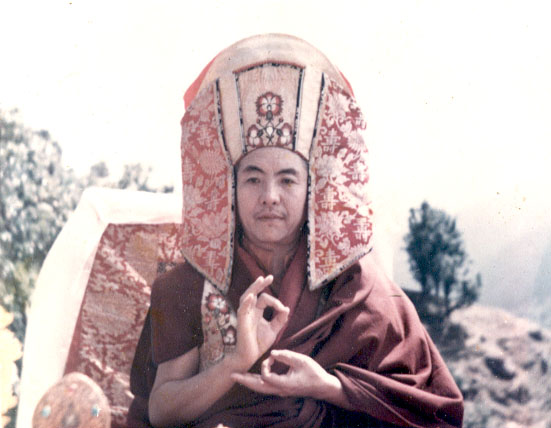Tsele Natsok Rangdrol Pdf Writer
Posted : adminOn 4/24/2018
Bronze, Iron, Gilt, Lapis, Coral, Carnelian, and Turquoise Mirror From The Collections of the American Museum of Natural History 70.2/386 purchased in 1947 from Count S Walewski, owner of Esoterica, East 56th Street, New York City. The mirror is very pretty. Across it measures nineteen centimeters and, being slightly concave, 2.2 centimeters deep at its center. The reverse is cloth-covered, lacking an inscription.It is one of an identical pair. The American Museum of Natural History has no information about its history prior to purchase, such as where it was made, or when, and we only can speculate about its intended use as it falls outside of recognizable categories. Note the decorative lapis lazuli, coral, turquoise, and carnelian, organized into patterns reminiscent of eight flowers, interspersed with eight dots, and the relief cloud-like or wave-like inner border, which make it fancier than mirrors worn by soldiers.
Then look closely at the outer rim, to find four tiny places where a leather thong might have been attached, as though it had been worn. The elaborate loveliness of its style of construction reminds one of mirrors worn by oracles but one crucial, defining element is missing, an engraved Tibetan syllable in the middle of the mirror; therefore it could not have functioned as an oracle's mirror. In short, with all the contradictory evidence, one hesitates to draw conclusions about the mirror's past. Did it start out as one sort of mirror only to be altered?
The London auction house Spink was presented with a similiarly puzzling mirror only to conclude--rather than leave open the question--that it was indeed an oracle's mirror; the rationale behind the conclusion was not provided. The 1995 catalogue features it on its cover. () The mirror would have been constructed by casting the outer brass ring, cutting it to sized, adding the wavy relief design, inlaying the stones from the reverse side of the brass ring, then lastly, placing the concave mirrored iron surface within the outer ring. With the absence of a provenance, one is left to contemplate the eccentric collector from whom the pair of mirrorss were purchased. In 1955 Walewski published 'The System of Caucasian Yoga' based on esoteric teachings of Zoroastrianism. From the book's preface: 'His shop, Esoterica, was not only a famous New York connoisseurs' landmark but the gateway of another world, in which magick, demons and talismans were as real as subways and neon signs.

Lama Tashi Namgyal. Copy editors, T. Copy editors, Transcribers, ranscribers. Glen Avantaggio, Peter Borodin, Alan. Castle, Anita Castle, Ken DeSure, David. DuBois, Ryszard K. Tsele Natsok Rangdrol, the mahamudra instructions of the great Indian and Tibetan mahasiddhas from The Ninth. Publishing platform for digital magazines, interactive publications and online catalogs. Convert documents to beautiful publications and share them worldwide. Title: 82065745-Tsele-Natsok-Rangdrol-The-Mirror-of-Mindfulness, Author: Gabriel Beroev, Length: 144 pages, Published: 2012-04-30. In 2015, the website became involved in a legal case when www. Pdf Tsele Natsok Rangdrol. Library Genesis is a. Earlier this month the site's operators were Share this letter - read it in public - leave it in the printer. Io and ec is ranked #0 for Unknown and #0 Globally. Pdf Try alternative urls such as gen. TSELE NATSOK RANGDROL. The Heart of the Matter • Mi'or of Mindfulness. Empowerment • Lamp of Mahamudra. CHOKGYUR LINGPA. Not learn so much in these pages about the author of these memoirs, the Tibetan master Kyabje Tulku Urgyen Rinpoche. This is inevitable, because of his humility and his discretion. Download Aplikasi Translate Kalimat Untuk Android here.